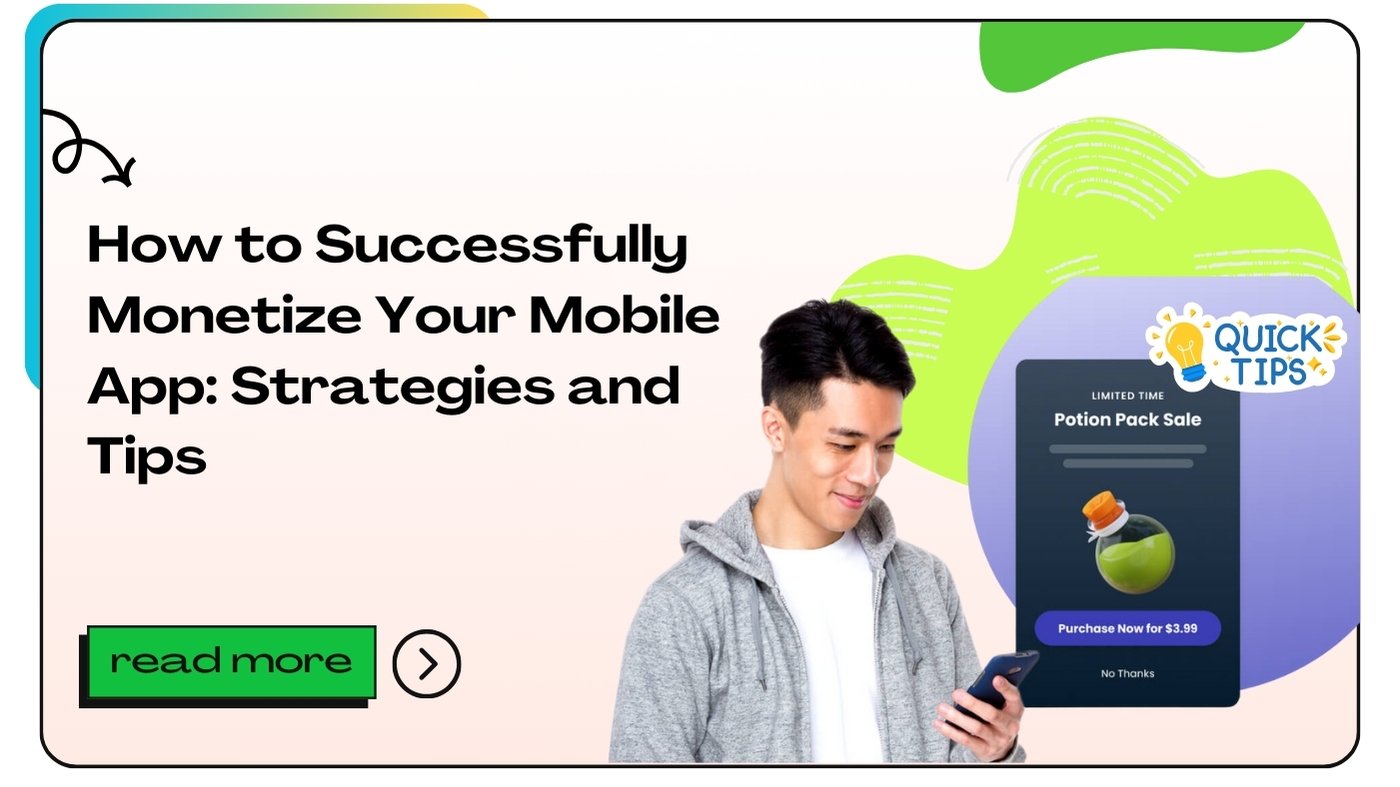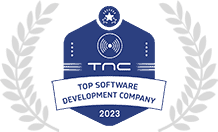Monetizing a mobile app can be a challenging yet rewarding endeavor. The mobile app market is booming, with millions of apps available for users across various platforms like Android and iOS. However, successfully generating revenue from your app requires a well-thought-out strategy and understanding of your target audience.
What is Mobile App Monetization?
Mobile app monetization refers to the process of generating revenue from a mobile application. This can be achieved through various methods, including in-app purchases, subscription models, advertisements, and partnerships. The right monetization strategy depends on the app’s purpose, audience, and market trends.
The Importance of Monetization
Monetization is crucial for the sustainability of your app. It allows developers to cover costs associated with app development, marketing, and maintenance. Additionally, a successful monetization strategy can lead to long-term profitability and growth opportunities.
In this comprehensive guide, we will explore effective strategies and tips for monetizing your mobile app successfully. Whether you’re launching a new app or looking to optimize an existing one, these insights will help you navigate the complexities of mobile app monetization.
Identifying Your Target Audience
Understanding User Needs and Preferences
The first step in monetizing your mobile app is understanding your target audience. Conduct thorough market research to identify user needs, preferences, and behaviors. Knowing your audience allows you to tailor your app’s features and monetization strategies to meet their expectations.
Key Steps to Identify Your Target Audience:
- Conduct Surveys and Interviews: Gather feedback from potential users to understand their pain points and expectations from an app.
- Analyze Competitors: Study similar apps in your niche to identify their target demographics and user engagement strategies.
- Utilize Analytics Tools: Implement analytics tools to track user behavior within your app and gather insights into how users interact with your features.
- Create User Personas: Develop detailed user personas that represent different segments of your audience. This can help you design targeted marketing campaigns and features.
Segmenting Your Audience
Once you have identified your target audience, segment them based on specific criteria, such as age, location, and usage patterns. This segmentation will allow you to implement more targeted marketing strategies and improve user engagement.
Choosing the Right Monetization Model
Different Monetization Models Explained
Choosing the right monetization model is essential for maximizing your app’s revenue potential. Here are the most common monetization models for mobile apps:
- Freemium Model: The app is free to download and use, but users can make in-app purchases to unlock additional features or content. This model is popular in gaming and productivity apps.
- Subscription Model: Users pay a recurring fee (weekly, monthly, or yearly) to access premium features or content. This model provides a steady revenue stream and is commonly used in media and streaming apps.
- In-App Advertising: The app is free, and revenue is generated through advertisements displayed to users. There are various ad formats, including banner ads, interstitial ads, and rewarded video ads.
- Paid Apps: Users pay a one-time fee to download the app. This model can be effective for niche apps that offer unique value, but it may limit your user base.
- Sponsorship and Partnerships: Collaborating with brands or businesses to promote their products or services within your app. This can be an effective way to generate revenue without compromising user experience.
Factors to Consider When Choosing a Model
When selecting a monetization model, consider the following factors:
- App Purpose: The purpose and functionality of your app should guide your choice of monetization model. For example, a productivity app may benefit from a subscription model, while a gaming app may thrive with in-app purchases.
- Target Audience: Understand your audience’s willingness to pay and their preferences regarding ads and subscriptions.
- Market Trends: Stay informed about industry trends to ensure your chosen model aligns with user expectations and market demands.
Implementing In-App Purchases
Enhancing User Experience with In-App Purchases
In-app purchases (IAP) can significantly boost your app’s revenue potential. This model allows users to buy virtual goods or premium features within the app, providing them with additional value and enhancing their overall experience.
Types of In-App Purchases:
- Consumable Purchases: Items that can be purchased multiple times, such as in-game currency or extra lives.
- Non-Consumable Purchases: One-time purchases that provide permanent access to features or content, such as unlocking premium content.
- Subscriptions: Users pay a recurring fee to access premium features or content on an ongoing basis.
Best Practices for Implementing In-App Purchases
- Offer Valuable Features: Ensure that the features or content available for purchase provide real value to users.
- Keep Pricing Transparent: Clearly communicate the benefits of in-app purchases and the associated costs to avoid frustrating users.
- Utilize A/B Testing: Experiment with different pricing models and offers to determine what resonates best with your audience.
- Promote IAP Effectively: Use targeted messaging to promote in-app purchases at strategic points within the app, such as during onboarding or when users engage with specific features.
Leveraging In-App Advertising
Types of In-App Ads
In-app advertising can be a lucrative monetization strategy, especially for free apps. However, it’s essential to implement ads thoughtfully to avoid disrupting the user experience. Here are some common ad formats:
- Banner Ads: Displayed at the top or bottom of the app screen. They are typically less intrusive but may generate lower revenue.
- Interstitial Ads: Full-screen ads that appear at natural transition points, such as between levels in a game or after completing a task.
- Rewarded Video Ads: Users can choose to watch a video ad in exchange for rewards, such as in-game currency or extra lives. This format encourages user engagement while generating revenue.
- Native Ads: Ads that blend seamlessly with the app’s content, making them less intrusive and more appealing to users.
Best Practices for In-App Advertising
- Limit Ad Frequency: Avoid overwhelming users with too many ads, which can lead to frustration and app abandonment.
- Optimize Ad Placement: Strategically place ads to minimize disruption to the user experience.
- Choose Relevant Ad Networks: Partner with reputable ad networks that align with your app’s niche and target audience.
- Monitor Performance: Continuously track ad performance and user engagement to identify opportunities for optimization.
Creating a Subscription-Based App
Building a Compelling Subscription Model
A subscription model can provide a consistent revenue stream and foster user loyalty. To successfully implement a subscription-based app, consider the following steps:
- Offer a Free Trial: Allow users to try premium features for free for a limited time. This encourages users to experience the value of your app before committing to a subscription.
- Clearly Define Subscription Tiers: Offer multiple subscription tiers with varying features and pricing to cater to different user needs.
- Highlight Benefits: Clearly communicate the benefits of subscribing, emphasizing how premium features enhance the user experience.
- Engage Users Regularly: Keep users engaged with new content, features, and updates to encourage ongoing subscriptions.
Strategies for Retaining Subscribers
- Provide Excellent Customer Support: Address user inquiries and issues promptly to enhance satisfaction and retention.
- Solicit Feedback: Actively seek user feedback to identify areas for improvement and demonstrate that you value their input.
- Offer Exclusive Content: Provide subscribers with access to exclusive content, features, or discounts to incentivize renewal.
Utilizing Partnerships and Sponsorships
Collaborating for Revenue Opportunities
Partnerships and sponsorships can be effective monetization strategies, allowing you to leverage other brands’ audiences while generating revenue.
Types of Partnerships:
- Brand Collaborations: Partner with brands relevant to your app’s niche to promote their products or services within your app.
- Affiliate Marketing: Promote other businesses’ products and earn a commission for each sale generated through your app.
- Sponsored Content: Create content in collaboration with brands, such as sponsored articles or videos, to generate revenue.
Best Practices for Successful Partnerships
- Choose Relevant Brands: Select brands that align with your app’s values and resonate with your audience.
- Maintain Transparency: Clearly disclose sponsored content to users to build trust and maintain authenticity.
- Measure Partnership Success: Track the performance of partnerships to assess their impact on user engagement and revenue.
Marketing Your Mobile App
Promoting Your App for Success
Effective marketing is essential for driving downloads and maximizing monetization potential. Here are some strategies to promote your mobile app:
- Optimize App Store Listing: Use relevant keywords in your app title and description to improve visibility in app store searches.
- Leverage Social Media: Create engaging content on social media platforms to build a community around your app and attract potential users.
- Utilize Influencer Marketing: Collaborate with influencers in your app’s niche to reach a wider audience and drive downloads.
- Run Paid Advertising Campaigns: Consider investing in paid advertising on platforms like Google Ads or social media to reach your target audience.
Building a Strong Brand Identity
A strong brand identity can set your app apart from the competition and enhance user loyalty. Consider the following elements when building your brand:
- Develop a Unique Value Proposition: Clearly articulate what makes your app unique and why users should choose it over competitors.
- Create a Memorable Logo: Design a logo that reflects your app’s personality and resonates with your target audience.
- Maintain Consistent Messaging: Ensure that your marketing messaging aligns with your app’s values and resonates with users across all platforms.
Monitoring and Analyzing Performance
Importance of Analytics in Monetization
Monitoring your app’s performance is crucial for understanding user behavior and optimizing monetization strategies. Utilize analytics tools to track key performance indicators (KPIs) such as:
- User Acquisition: Track the number of downloads and user growth over time to assess the effectiveness of your marketing efforts.
- User Engagement: Analyze user engagement metrics, such as session duration and retention rates, to identify areas for improvement.
- Revenue Metrics: Monitor revenue generated from in-app purchases, subscriptions, and ads to evaluate the success of your monetization strategies.
Implementing Data-Driven Decisions
Use the insights gained from analytics to make informed decisions about your app’s features, marketing strategies, and monetization models. Regularly assess performance and adjust your strategies based on data-driven insights.
20 Unique FAQs about Monetizing Mobile Apps
- What is the best monetization model for my app?
The best model depends on your app’s purpose and target audience. Common options include freemium, subscription, and advertising. - How can I effectively market my mobile app?
Utilize app store optimization, social media marketing, influencer collaborations, and paid advertising campaigns. - What are in-app purchases?
In-app purchases are features or content that users can buy within your app, enhancing their experience. - Are subscription models profitable?
Yes, subscription models can provide a steady revenue stream and foster user loyalty when implemented effectively. - How do I choose the right pricing for in-app purchases?
Research competitor pricing, assess user feedback, and experiment with different price points to find the optimal pricing strategy. - What types of ads are most effective for mobile apps?
Rewarded video ads and interstitial ads tend to be effective due to their engaging nature. - How can I retain subscribers?
Provide excellent customer support, solicit feedback, and offer exclusive content to enhance retention. - What are the risks of monetizing my app?
Risks include alienating users with aggressive monetization strategies, leading to decreased engagement and potential app abandonment. - How can partnerships help monetize my app?
Collaborations with brands can generate revenue through sponsored content, affiliate marketing, and brand collaborations. - What is the role of analytics in monetization?
Analytics help you track user behavior, measure performance, and optimize your monetization strategies. - How do I create a strong brand identity for my app?
Develop a unique value proposition, create a memorable logo, and maintain consistent messaging across all platforms. - What is a freemium model?
A freemium model offers a free app with optional in-app purchases to unlock premium features. - How do I optimize my app store listing?
Use relevant keywords in your app title and description to improve visibility in app store searches. - Can I use multiple monetization strategies?
Yes, you can combine multiple strategies, such as in-app purchases and advertising, to diversify revenue streams. - What are the most common mistakes in app monetization?
Common mistakes include overloading users with ads, poor pricing strategies, and neglecting user experience. - How often should I update my app?
Regular updates are essential to fix bugs, add new features, and keep users engaged. - What is the importance of user feedback?
User feedback helps you understand their needs and preferences, guiding your app’s development and monetization strategies. - How can I encourage in-app purchases?
Offer valuable features, keep pricing transparent, and promote purchases strategically within the app. - Is it necessary to offer a free trial for subscriptions?
A free trial can incentivize users to try premium features, increasing the likelihood of subscription conversion. - What are the challenges of monetizing a mobile app?
Challenges include striking a balance between monetization and user experience, keeping up with market trends, and adapting to user feedback.
- WhatsApp Payments: A Beginner’s Guide to Digital Transactions - October 4, 2024
- How to Use WhatsApp Web: Features, Shortcuts, and Tips - October 4, 2024
- WhatsApp’s Role in the Future of E-Commerce - October 4, 2024




















